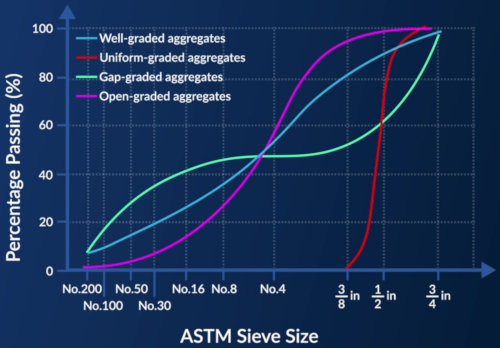5.13:
Types of Aggregate Grading
7 Views
•
•
Aggregate grading is crucial in economically obtaining a concrete mix with adequate strength, reasonable workability, and minimal segregation. There are four types of aggregate gradation: well-graded, uniformly (or one-sized) graded, gap-graded, and open-graded.
Well-graded aggregates include a complete range of necessary size fractions that fit together to create a dense matrix with minimal voids, represented by a smooth, continuous gradation curve. This type of grading ensures good workability and stability for the concrete.
In contrast, one-sized or uniformly graded aggregates consist predominantly of particles of the same size, which is evident from a nearly vertical gradation curve. While these aggregates provide good permeability, they lack stability and are typically used in specific applications like chip seals in pavements.
Gap-graded aggregates are characterized by the absence of certain size fractions, causing a significant portion of particles to pass through two vastly different sieves. This results in a gradation curve with a nearly horizontal section, indicative of missing intermediate sizes. Due to the missing material sizes, these aggregates can lead to issues with concrete stability.
Open-graded aggregates, missing smaller sizes that fill voids between larger aggregates, exhibit a flat gradation curve with minimal values in the smaller size range. These aggregates are highly permeable but have reduced stability.

